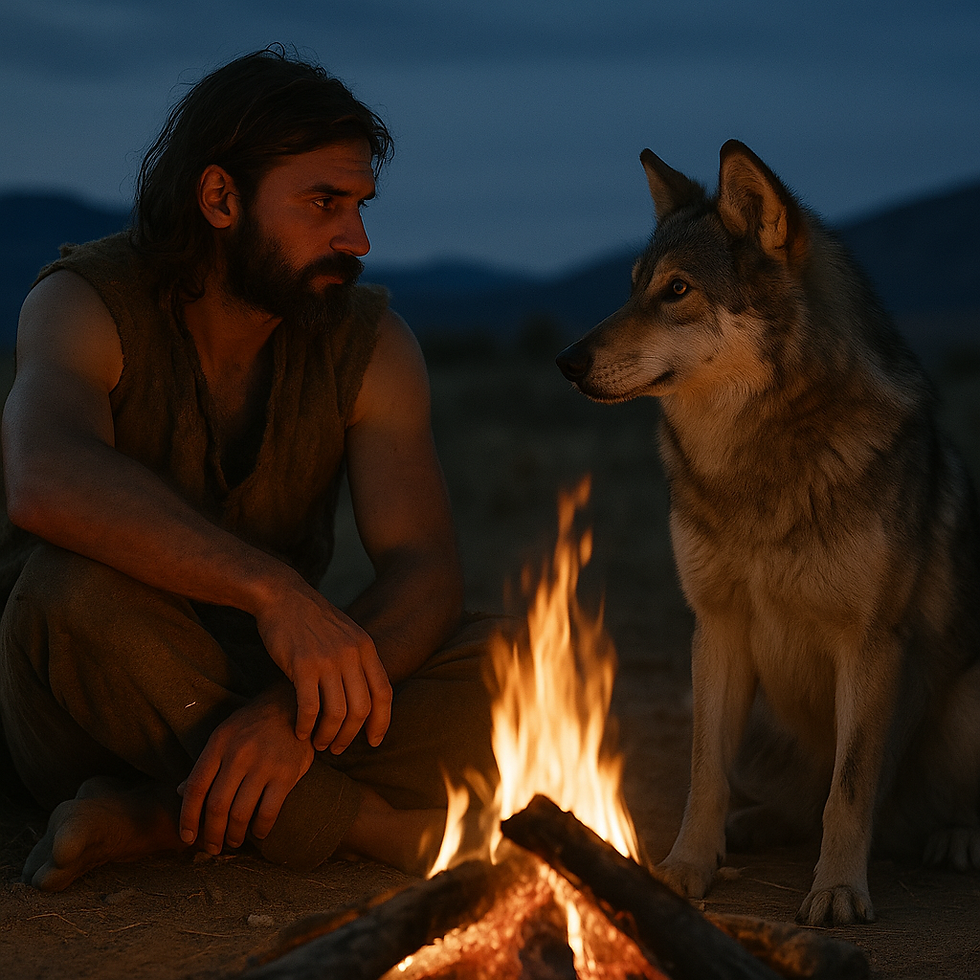Hunting Dogs: How Canine Instincts Fed Humanity and Still Shape Dog Training Today
- Elkhan Hajizada
- Sep 1, 2025
- 3 min read
Hunters, Trackers, and Warriors: The Dogs Who Fed Us
When people think of hunting dogs today, they imagine sleek retrievers bringing back ducks, or hounds howling in the woods. But the truth goes far deeper. Hunting dogs weren’t a sport. They were survival. Without them, humans would have starved.
Dogs didn’t just guard our camps or herd our flocks — they went into the wilderness with us, side by side, and brought back the food that kept families alive.
Why Humans Needed Hunting Dogs
Humans were clever, but not the fastest. Not the strongest. Not the sharpest-nosed hunters in the animal kingdom. We couldn’t outrun deer, sniff out prey like a wolf, or flush game from dense brush. Alone, we were limited.

But with dogs, everything changed.
Dogs could track prey we couldn’t see.
Dogs could chase animals too fast for us to catch.
Dogs could hold dangerous animals in place until humans closed in.
That combination — human tools plus canine instincts — made us unstoppable.
The First Hunting Partnerships
Imagine the scene: humans with spears moving th
rough the forest, and dogs sprinting ahead. A boar charges, snarling — but the dogs surround it, snapping, keeping it distracted while hunters move in for the kill.
Or a deer vanishes into the thick brush. Humans would lose it, but the dogs don’t. Their noses follow the invisible trail until the deer is found. That deer becomes food, clothing, tools — survival.
Different Roles, Different Instincts
Over time, dogs evolved into specialized hunters.
1. Scent Hounds

Bred for their noses, not their speed.
They track prey for miles, following invisible trails across dirt, rock, and water.
Examples: Bloodhounds, Beagles, Coonhounds.
2. Sighthounds

The fastest hunters, with incredible eyesight and speed.
Used to chase down deer, hare, and gazelle.
Examples: Greyhounds, Salukis, Whippets.
3. Retrievers and Gun Dogs

Skilled in finding and bringing back game after the shot.
Work with humans quietly, patiently, without damaging the prey.
Examples: Labrador Retrievers, Golden Retrievers, Spaniels.
4. Catch Dogs & Boar Dogs

Bred to hold down powerful prey like wild boar until hunters arrived.
Courage, strength, and a willingness to risk everything.
Examples: Bulldogs, Dogo Argentinos, Catahoulas.
The Warrior Instinct
Hunting dogs weren’t just providers. In many cultures, they were warriors. They stood between humans and danger, taking on wild animals with teeth and courage. Some dogs even went to war, fighting alongside soldiers, guarding camps, and intimidating enemies.
This wasn’t “obedience.” This was instinct, refined through partnership. Dogs didn’t just learn to hunt — they became hunters with us.
What We Owe Them Today
Modern owners forget this. They see a Beagle “misbehaving” by following scents on a walk, or a Labrador obsessed with retrieving balls, or a Malinois locked onto movement like a laser. They think it’s “problem behavior.”
It’s not. It’s history. It’s instinct. It’s the very reason humans survived long enough to build cities, houses, and civilization.
Most people don’t deserve their dogs. They want obedience without understanding, calmness without exercise, companionship without purpose. But when you train a hunting breed properly — channeling their nose, their chase drive, their need to retrieve — you unlock not just obedience, but fulfillment.
Training Hunting Dogs in Modern Life
Scent work: Let them track, search, and find — whether it’s toys, food, or scent articles.
Retrieving games: Controlled fetch with clear rules builds cooperation and confidence.
Structured play & exercise: Channel energy through tug, fetch, and obedience games.
E-collar training for off-leash control: Freedom with safety, allowing instincts without chaos.
A fulfilled hunting dog isn’t a burden. It’s a glimpse into history — into the partnership that kept humans alive for thousands of years.
The Legacy of the Hunt
Dogs didn’t just help us find food. They taught us about teamwork, persistence, and loyalty. They gave us survival, and in return, we gave them purpose. That bond still lives today — every time a dog lowers its nose to the ground, locks eyes on movement, or proudly carries back a ball.
The question is: are we honoring that legacy, or trying to erase it?
👉 In the next blog, we’ll move into another forgotten role: how dogs became defenders of health and safety — from killing rats in medieval streets to saving lives in modern hospitals.
.png)



Comments